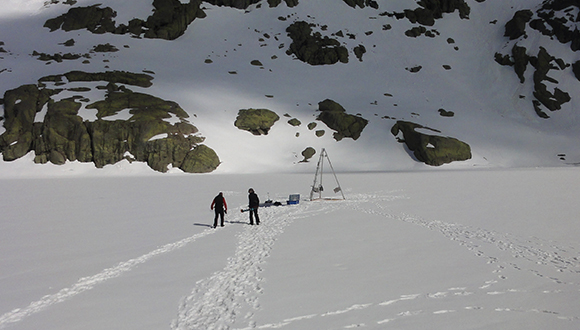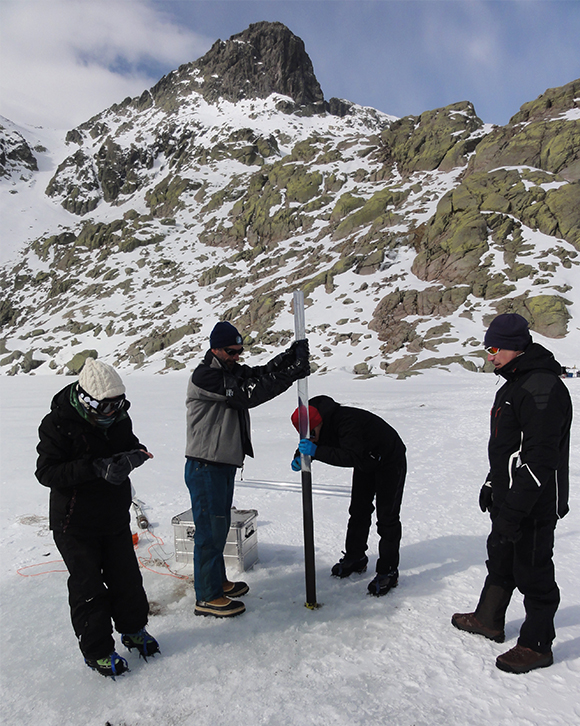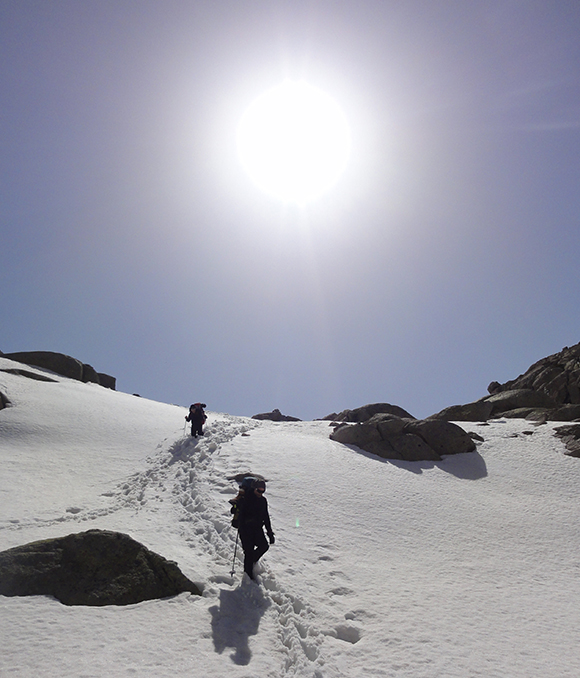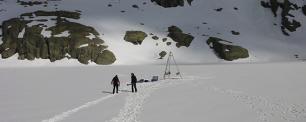The climate of the Iberian Peninsula reconstructed from Roman times to present
Researchers from CREAF, ICTJA-CSIC, and UB associate climatic changes with two of the most important planetary atmospheric phenomena, the North Atlantic Oscillation (NAO) and the East Atlantic (EA) pattern. The study was carried out with the aid of sediment records from a lake at more than 2,000 meters of altitude in the Spanish Sierra de Gredos mountain range.

"“Synchronizations between the NAO and EA have been different in each historical period studied, and it is for this reason that the climate has varied,” explains CREAF researcher Sergi Pla.
A study published in the journal Quaternary Science Reviews is the first to describe how the Iberian climate of the past 2,000 years has been influenced by the North Atlantic Oscillation (NAO) and the East Atlantic (EA) pattern; these are two important atmospheric phenomena, distinct from the well-known El Niño of the Pacific.
The multidisciplinary team of scientists has been able to make a detailed description of the record of temperature and precipitation from 200 B.C.E. to present thanks to the analysis of sediments from lake Cimera (within the Sierra de Gredos mountain range, Spain). In fact, this research represents a “significant advancement for understanding climatic mechanisms which have had a large influence on our history,” says first author of the article and ICTJA-CSIC researcher Guiomar Sánchez.
The current climate of the Iberian Peninsula is drier than the previous two millennia
In order to carry out the climatic reconstruction, during the winter of 2012 the authors took sediment samples from lake Cimera, a lake of glacial origin located at 2,140 meters above sea level. The reason for choosing this lake was that “a remote lake like Cimera allows us to study variations in climate of the past 2,000 years without having the influence of local human activities in the sedimentary record. This way the climatic signal we obtain is a lot clearer,” explains Sánchez.

The team of researchers recoge Samples of sediment in the Sierra de Gredos.
The results obtained show that:
- During the Roman Period (200 B.C.E. – 500 C.E.) the climate in the central part of the Peninsula altered between warm and cold periods, but dominating were warm and wet winters and hot summers.
- During the Lower Middle Age (500 - 900 C.E.) there was a change towards colder conditions, with cold and dry winters and dry summers.
- Later, during the Medieval Climatic Anomaly (900-1300 C.E.) the central Iberian climate became differentiated due to dry and warm winters.
- During the next period of the Little Ice Age (1300-1850 C.E.), the opposite occurred: winters were wet and cold and the summers were also cold.
The authors also characterized the Industrial Age, which included the period between 1850 and 2012 and it could be said that this represents the current climate, clearly affected by climate change. This influence was evident in the sediments analyzed and Guiomar Sánchez says that “the most recent climate is much drier and warmer than 2,000 years ago.”
The influence of the NAO and EA on the Iberian climate
The new research, which included integration with previous climatic reconstructions of other areas of the Peninsula, made it possible to establish with precision the influence of the main patterns of atmospheric circulation: the North Atlantic Oscillation (NAO) and the East Atlantic (EA) pattern, which are fundamental for understanding the dynamics of precipitation and temperatures on the Peninsula.
The interaction between the two phenomena while in the same phase creates a relatively homogenous climate across the Peninsula, while the interaction of the opposite phases causes a greater climatic variability.
The NAO and EA have two phases, one positive and the other negative. The NAO’s negative phase is characterized by wet winters in Southern Europe, while the positive phase causes drier winters. Summers, on the other hand, are colder in the negative phase of the EA than in its positive phase.
“When these climatic patterns have been in the same and positive phases, EA+ NAO+,which was the case during the Medieval Climatic Anomaly, the climate was warm-dry. In the contrary case, when they were in the same negative phase, EA- NAO-, which is what happened during the Little Ice Age, the climate was cold-wet. During the periods in which the patterns are in different phases, this pairing is broken and the climate makes other combinations. “It is for this reason that during periods when the two climatic patterns were in different phases, such as EA+ NAO-, which occurred during the Roman period, the climate was warm-wet. On the other hand, when the phases were different and opposite, EA- NAO+, like what happened during the Lower Middle Age, the climate was dry-cold.

ARTICLE
Sánchez-López, G., Pla Rabes, S., et al. (2016), Climate reconstruction for the last two millennia in central Iberia: The role of East Atlantic (EA), North Atlantic Oscillation (NAO) and their interplay over the Iberian Peninsula, Quaternary Science Reviews, 149, 135-150. DOI: 10.1016/j.quascirev.2016.07.021.







